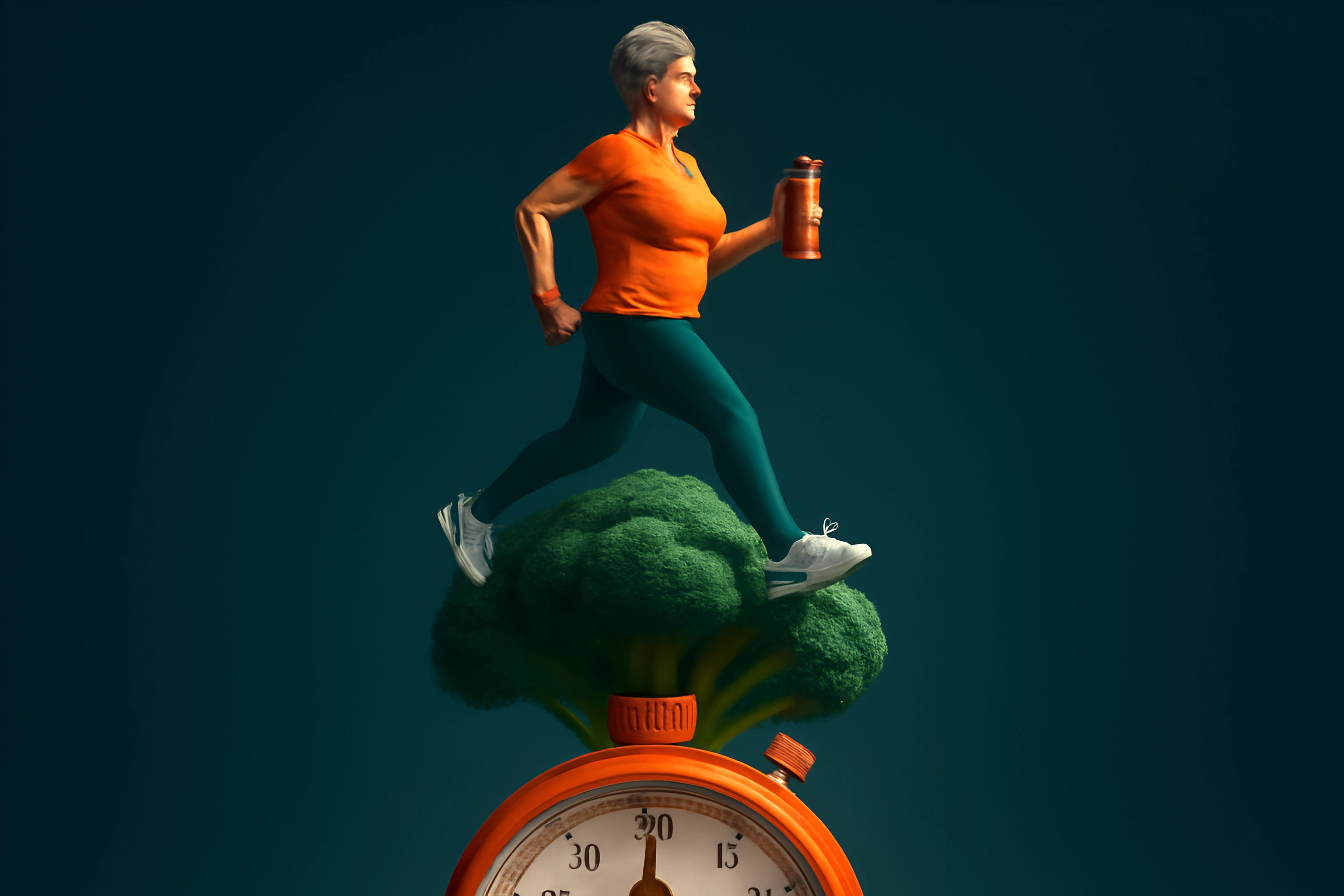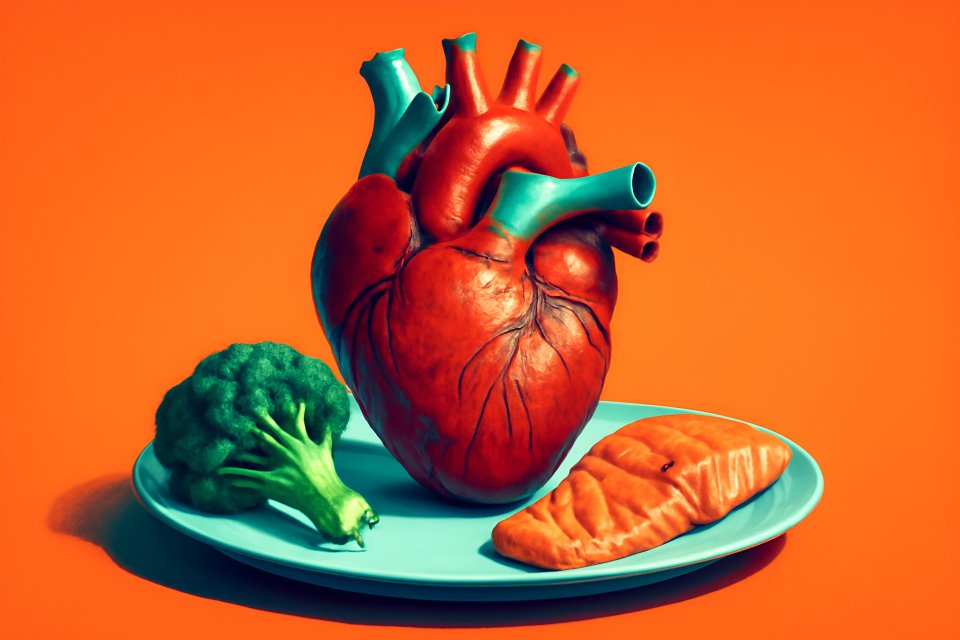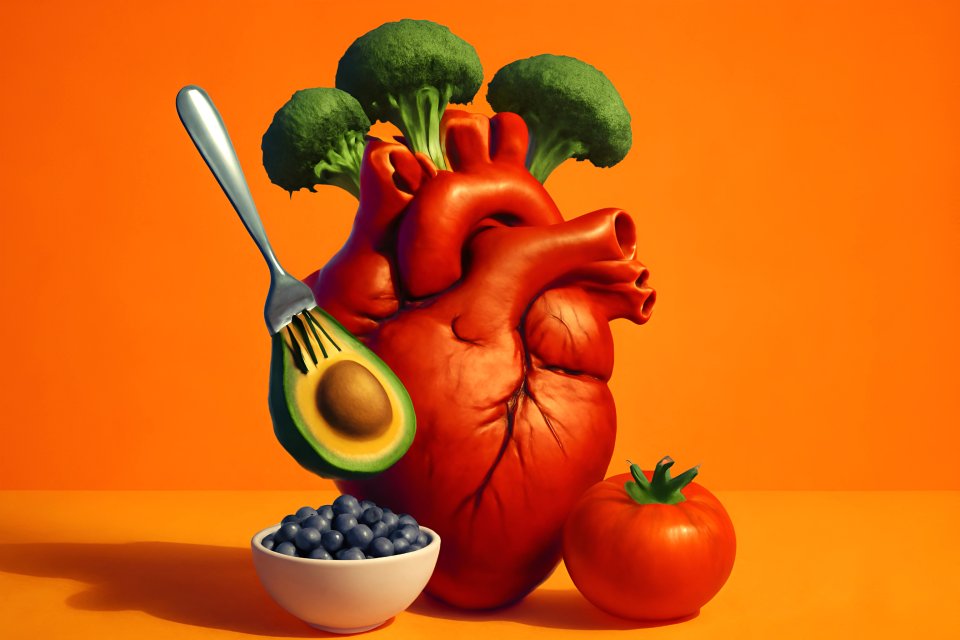
Introduction: Reclaiming Your Energy and Vitality After 50
Does it feel like your body's internal engine has slowed down a bit? You're eating well and staying active, but the scale isn't budging, and your energy levels just aren't what they used to be. You're not imagining it, and you are certainly not alone in feeling this way.
This change, this metabolic downshift, is a natural part of the aging process that many of us face. But here’s the truth they don’t tell you: it is not a life sentence. Think of this not as a battle against your body, but as a powerful opportunity to start working with it in a smarter, more intuitive way.
Forget the gimmicks and the frustrating fad diets. This guide is your roadmap to boosting metabolism naturally after 50 by focusing on simple, sustainable, and science-backed strategies. We will show you how to make powerful lifestyle changes and nutritional strategies that empower you to feel strong, vibrant, and in control of your health for years to come.
The "Why": Understanding Your Metabolism in This New Chapter
To win any game, you have to understand the rules. The same goes for your metabolism. Knowing why it changes puts the power back in your hands, transforming feelings of frustration into focused, effective action.
The single biggest factor is age-related muscle loss, a condition known as sarcopenia. As we get older, we naturally begin to lose muscle mass, and this process can accelerate after 50. Why does this matter so much? Because muscle is your metabolic furnace; it burns significantly more calories at rest than fat does. As you lose that precious muscle, your resting metabolic rate—the number of calories you burn just by being alive—declines right along with it.
At the same time, our hormones are undergoing a significant transition. For women, declining estrogen during perimenopause and menopause can influence where the body stores fat, often favoring the midsection. For men, a gradual decline in testosterone can also lead to less muscle and more fat. These hormonal shifts are a key reason why the old ways of doing things might not be working anymore.
Finally, there's the simple reality of "lifestyle creep." Over the decades, our daily activity levels can slowly decrease without us even noticing, further contributing to a slower metabolic engine. But here’s the good news: every single one of these factors can be positively influenced by the choices you make every single day.
| Tissue Type | Daily Calorie Burn (per pound) |
|---|---|
| Muscle | ~6 calories |
| Fat | ~2 calories |
Section 1: Vital Nutrition: Fueling Your Metabolic Fire
Let’s reframe how we think about food. This isn't about restriction or deprivation; it's about strategic nourishment. It’s about giving your body the high-quality fuel it needs to run efficiently and build a stronger, more resilient you.
Prioritize Protein at Every Meal
If muscle is your metabolic engine, then protein is the premium fuel that keeps it running strong. Your body has to work harder and burn more calories to digest protein compared to fats and carbs—a phenomenon called the Thermic Effect of Food (TEF). More importantly, protein provides the essential building blocks to fight off sarcopenia and preserve, or even build, new calorie-burning muscle.
Making this happen is simpler than you think. Aim to include a source of high-quality protein with every single meal. We’re talking about metabolism-boosting foods for seniors like lean chicken, fatty fish like salmon, eggs, Greek yogurt, lentils, and tofu. A good rule of thumb is to aim for a palm-sized portion, which helps ensure you’re getting the 25-35g of protein per meal that research shows is optimal for stimulating muscle growth in adults over 50.
To get started right away, explore some of our Balanced Breakfasts for Seniors: Nutritious Recipes to Start Your Day Right Over 50 to see how delicious and easy it can be. This simple shift from a carb-heavy breakfast to a protein-focused one can set the metabolic tone for your entire day.
Embrace Fiber and Whole Foods
Think of fiber as your metabolism's regulatory system. It helps stabilize blood sugar levels, preventing the energy crashes and cravings that can lead to overeating and fat storage. By keeping you feeling full and satisfied, fiber is a powerful ally in managing your appetite and maintaining a healthy weight.
The best sources are whole, unprocessed foods that are bursting with nutrients. Fill your plate with leafy greens, colorful berries, beans, and ancient grains like oats and quinoa. According to Harvard Health, adults who consume more fiber have healthier metabolic profiles.
Making this change is about adding more goodness to your plate, not taking things away. For more ideas on how to build a metabolically supportive diet, check out our guide on Age-Defying Nutrition: Meal Planning Tips for Heart Health After 50, as the principles of heart health and metabolic health go hand-in-hand.
Hydration is Non-Negotiable
Your body is over 60% water, and every single cellular process, including metabolism, depends on it. When you're even mildly dehydrated, your body's systems become sluggish and inefficient, and your metabolism can take a nosedive. You wouldn't let your car's engine run without oil, so don't ask your body to run without enough water.
Studies have shown that drinking water can temporarily boost your metabolic rate. One study found that drinking about two cups (500ml) of water increased metabolism by 30% for over an hour. This small habit, practiced consistently, can add up to a significant calorie burn over time.
Make hydration an effortless part of your day. Carry a reusable water bottle with you everywhere, enjoy herbal teas, and eat water-rich foods like cucumber, melon, and celery. Your energy levels and your metabolism will thank you for it.
Spice Things Up (Literally!)
Here’s a fun way to give your metabolism a little extra nudge. Certain spices contain compounds that can create a small, temporary boost in your metabolic rate. While it’s not a magic bullet, it’s a delicious bonus that adds flavor and function to your meals.
The compound capsaicin, found in chili peppers and cayenne, is known to slightly increase thermogenesis—the process of your body producing heat and burning calories. Research suggests it can boost fat oxidation and may increase daily energy expenditure by around 50 calories. Other spices like ginger and cinnamon can also play a supportive role in metabolic health.
Think of this as the cherry on top of your healthy eating plan. Sprinkle some cinnamon on your morning oatmeal, add a pinch of cayenne to your scrambled eggs, or sip on a warm cup of ginger tea in the afternoon. It’s a simple, flavorful way to support your metabolic fire.
Section 2: Wellness Habits: Powerful Lifestyle Changes for Metabolic Health
What you eat is only half of the equation. How you live—how you move, rest, and manage stress—is just as critical for stoking your metabolic fire. These powerful habits work in synergy with your nutrition to create lasting change.
The #1 Rule: Build and Maintain Muscle with Strength Training
This is the single most effective strategy for reversing the metabolic slowdown that comes with age. Strength training directly combats sarcopenia by signaling your body to build and maintain metabolically active muscle tissue. Remember, the more muscle you have, the more calories you burn around the clock, even when you’re sitting on the couch.
Forget the myth that you need to become a bodybuilder. We’re talking about functional strength that makes everyday life easier and safer. According to the Mayo Clinic, the many benefits of resistance training as you age include a higher metabolism, stronger bones, and better balance.
Aim for two to three sessions per week, focusing on major muscle groups. You can use your own body weight for exercises like squats and wall push-ups, or incorporate resistance bands and light dumbbells. The key is consistency and progressive challenge—always striving to get just a little bit stronger.
Move More, Sit Less (Embrace NEAT)
What if I told you there was a way to burn hundreds of extra calories a day without ever stepping foot in a gym? It’s called Non-Exercise Activity Thermogenesis, or NEAT, and it’s one of the most underrated natural ways to increase metabolism in older adults. NEAT is simply the energy you expend for everything you do that isn't sleeping, eating, or formal exercise.
This includes activities like gardening, taking the stairs, pacing while on the phone, fidgeting, or even just standing instead of sitting. The difference in NEAT between an active person and a sedentary one can be staggering, accounting for up to 2,000 calories per day. This is your secret weapon against a slowing metabolism.
Start looking for opportunities to weave more movement into your day. Park a little further from the store entrance, get up and stretch during TV commercials, or do some light housework. For more inspiration, explore our Practical Tips for Boosting Metabolism with Daily Activities After 50.
Prioritize Deep, Restorative Sleep
Sleep is not a luxury; it is a biological necessity for a healthy metabolism. When you don't get enough quality sleep, your body goes into a state of stress. This causes levels of the stress hormone cortisol to rise, which signals your body to store fat, particularly around your belly.
Poor sleep also throws your hunger hormones, ghrelin and leptin, completely out of whack. This makes you feel hungrier and less satisfied after eating, a dangerous combination that can lead to weight gain and metabolic disruption. Snooze more, eat less isn't just a catchy phrase; it's a metabolic imperative.
Aim for 7-8 hours of quality sleep per night. You can achieve this by creating a relaxing bedtime routine, making your bedroom a cool, dark, and quiet sanctuary, and avoiding screens for at least an hour before bed. To build a powerful evening ritual, discover our Mindful Habits for Better Sleep: Evening Routines for 50+ Wellness.
Manage Stress to Support Your System
Just like poor sleep, chronic stress is a major enemy of your metabolism. When you’re constantly stressed, your body is flooded with cortisol. As the Mayo Clinic explains, chronic stress puts your health at risk by disrupting nearly all of your body's processes, including your metabolism.
This hormonal state can increase your appetite for sugary, fatty foods and encourages your body to store fat in the abdominal area. To protect your metabolism, you must have tools to manage your stress effectively. This is about building resilience so that life's challenges don't derail your health goals.
Find what works for you. This could be a daily 10-minute meditation practice, deep breathing exercises, taking a walk in nature, or losing yourself in a hobby you love. These activities aren't indulgences; they are essential practices for metabolic health.
Putting It All Together: A Sample Day for a Healthy Metabolism
Seeing how these strategies fit into a real day can make them feel much more achievable. Here is what a day focused on metabolic health could look like:
- Morning: Start your day with a large glass of water, followed by a protein-packed breakfast like a three-egg omelet with spinach and a side of berries.
- Mid-Day: After a balanced lunch, take a brisk 20-minute walk outside to boost your NEAT and aid digestion.
- Afternoon: Before you start making dinner, do a quick 15-minute resistance band workout focusing on squats, rows, and shoulder presses.
- Evening: Wind down with a cup of chamomile tea and read a book instead of scrolling on your phone to prepare your body for deep, restorative sleep.
Conclusion: Your Healthiest Chapter is Just Beginning
Boosting your metabolism after 50 isn't about finding a magic pill. It's about a holistic commitment to four fundamental pillars of health.
This isn’t about chasing a younger version of yourself. It’s about empowering the strong, capable person you are today with the knowledge and tools to thrive. By embracing these lifestyle changes for metabolic health, you are making a profound investment in a future filled with energy, strength, and boundless vitality. Your best, most vibrant chapter is just beginning.












